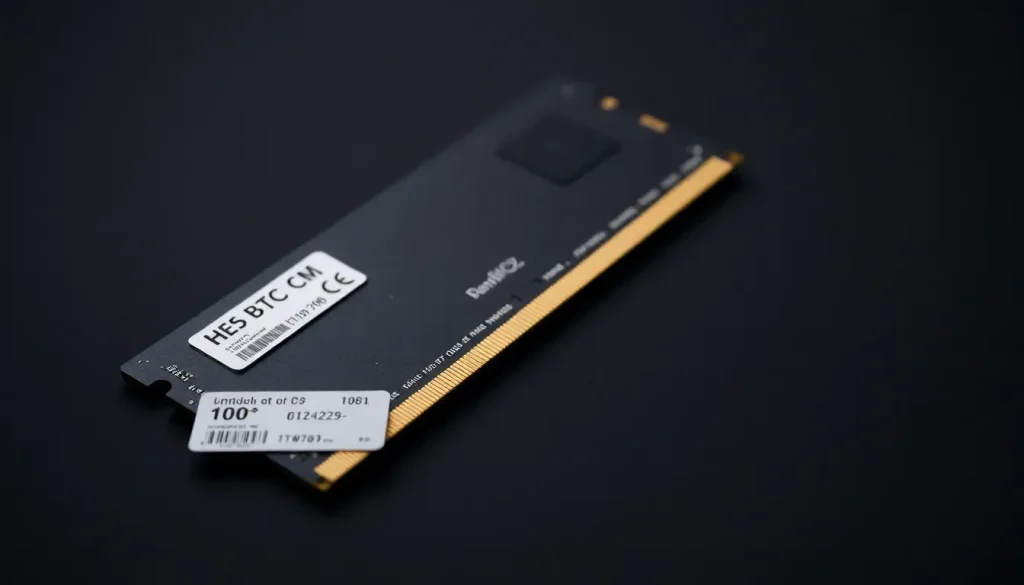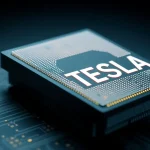Best Time to Buy DDR5 and DDR4 RAM Modules as Prices Rise

As the technology landscape continues to evolve at a breakneck pace, the demand for high-performance memory modules like DDR4 and DDR5 is surging. Recent market analyses indicate that now could be one of the most opportune times to invest in these critical components, especially before prices potentially escalate further. In this article, we’ll delve into the latest trends, projections, and considerations surrounding the memory market.
Major DRAM suppliers are expected to increase prices significantly
The memory market is currently experiencing a pivotal moment, driven largely by the booming demand for AI technologies. This surge has led to what is being termed a "DRAM supercycle," where production capacities are being stretched to their limits. Major suppliers such as Samsung and SK Hynix are reportedly planning to implement a 30% price increase on DRAM and NAND flash chips, a trend that could be reflected in consumer prices as early as the fourth quarter of this year.
Such price hikes are not merely speculative; they are based on substantial shifts in production priorities. Companies are reallocating resources to focus on high-bandwidth memory (HBM), which is critical for AI workloads. As highlighted in a recent report by ChosunBiz, the demand for DRAM is becoming increasingly concentrated on AI applications, particularly from large customers like NVIDIA and AMD, who are leading the charge in custom chip development.
Furthermore, there’s a trend where major DRAM customers are securing production lines for the next two to three years, indicating a long-term commitment to high-performance memory solutions. This growing demand is poised to push prices even higher, making it imperative for consumers to act swiftly if they are considering an upgrade.
Current trends in DDR4 and DDR5 prices
According to data from DRAMeXchange, the prices for DDR4 and DDR5 memory modules have been steadily increasing. The latest reports show that the price of a 16 GB DDR5 module has surged by 5% in a single day. This upward trend is not limited to wholesale markets; retail prices are also reflecting these changes. For instance, modern DDR5 RAM models, such as the G.Skill Trident Z5 Neo, have seen price increases of up to 40% within just one month, peaking at approximately €189.90 on platforms like Idealo.de.
- DDR5 16 GB price increase: 5% in one day.
- Retail price of G.Skill Trident Z5 Neo: €189.90.
- Retailers like Amazon and Newegg also reporting steady price hikes.
- Long-term trends suggest continued increases into future quarters.
The current pricing may still appear manageable, especially since the supply chain has yet to fully adjust to the new DRAM quotations. However, as industry giants like Micron and Samsung prepare for price hikes, consumers should brace for a potential spike in retail costs shortly. If you are contemplating an upgrade, Q3 of this year may present the last opportunity to secure DDR4 or DDR5 at relatively stable prices.
Are DDR5 prices going up?
Yes, the prices of DDR5 modules are indeed expected to rise. As mentioned earlier, the current market dynamics are pushing suppliers to implement significant price increases. This escalation is primarily driven by heightened demand from sectors heavily investing in AI and machine learning capabilities. As more companies pivot toward these technologies, the competition for DRAM resources intensifies, which naturally leads to higher prices.
- Increasing demand from AI and machine learning sectors.
- Competition among tech giants for limited DRAM resources.
- Potential for further price increases in Q4.
Is DDR5 so much better than DDR4?
When comparing DDR5 to its predecessor, DDR4, several distinctions become apparent. DDR5 offers higher bandwidth and increased capacity, making it a superior choice for demanding applications. Here are some key differences:
- Speed: DDR5 can achieve data rates of up to 8400 MT/s, while DDR4 maxes out around 3200 MT/s.
- Capacity: DDR5 supports module sizes of up to 64 GB, compared to DDR4's maximum of 32 GB.
- Power Efficiency: DDR5 operates at a lower voltage (1.1V) than DDR4 (1.2V), enhancing energy efficiency.
These improvements make DDR5 particularly advantageous for gaming, data-intensive tasks, and future-proofing systems, as software demands continue to grow.
Is DDR5 still a good investment in 2025?
Looking ahead to 2025, DDR5 will likely remain a viable and even preferable option for most consumers and professionals. As applications requiring higher performance continue to emerge, the benefits of DDR5 memory will only become more pronounced. However, it’s worth noting that the initial investment may be higher due to current price trends.
- Greater compatibility with next-gen CPUs and GPUs.
- Potential for even more advanced features in future iterations.
- Long-term savings on upgrades and replacements.
Given the trajectory of technology development, investing in DDR5 could be seen as a strategic move to future-proof systems against growing demands.
Is 32 GB of DDR5 overkill?
For most users, 32 GB of DDR5 might seem like an excessive amount, but it largely depends on individual use cases. Gamers, content creators, and professionals working with large datasets will certainly benefit from this capacity. Here’s a quick breakdown of typical use cases:
- Casual Users: 16 GB is often sufficient for general tasks such as web browsing and office applications.
- Gamers: 32 GB provides headroom for modern games and multitasking.
- Content Creators: 32 GB is recommended for video editing, 3D rendering, and large-scale projects.
Ultimately, while 32 GB may be overkill for some, it offers a safety net for users intending to push their systems to higher performance levels.
For further insights into the DDR5 pricing trend, consider checking out this informative video:
As the landscape of memory technology continues to shift, understanding these trends and insights will empower consumers to make informed decisions regarding their hardware investments.




Leave a Reply